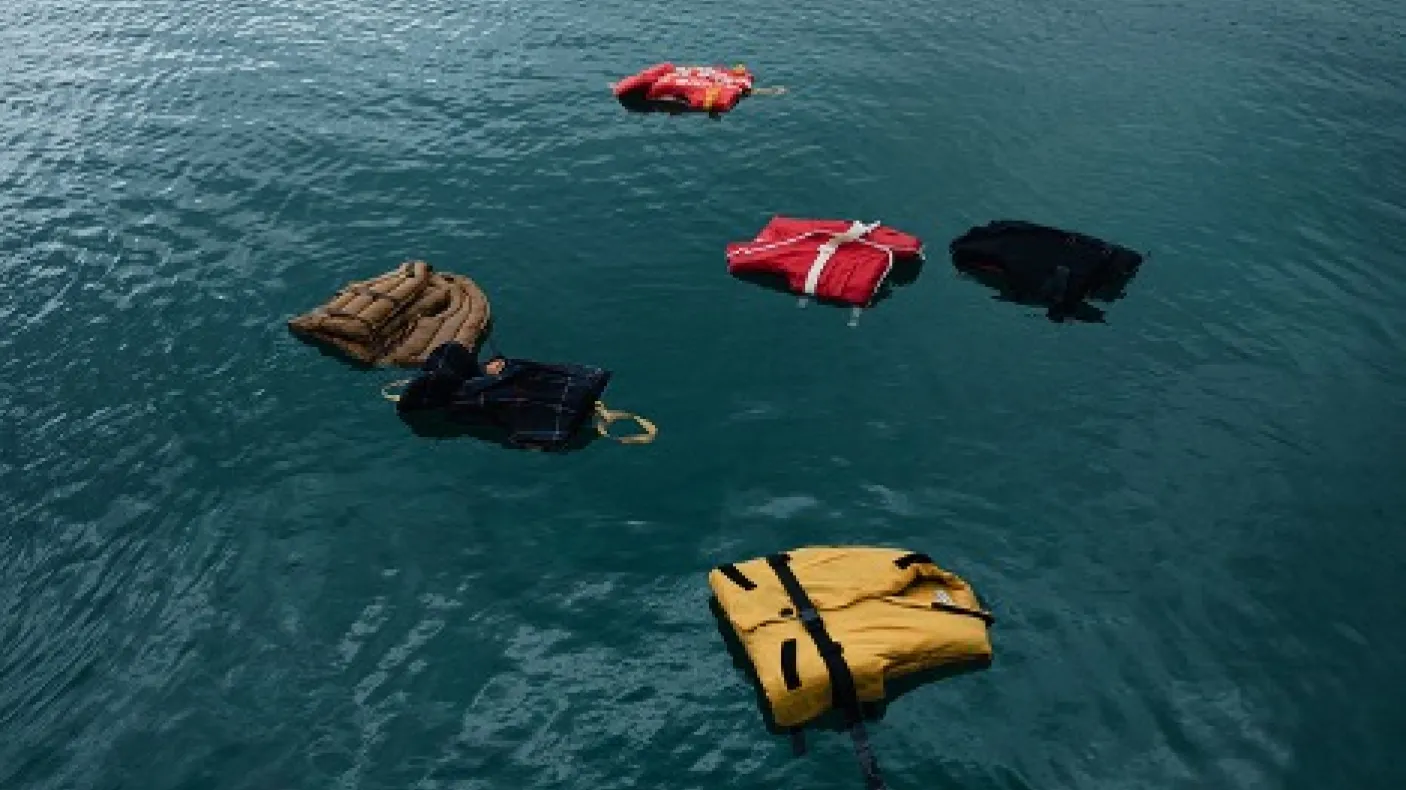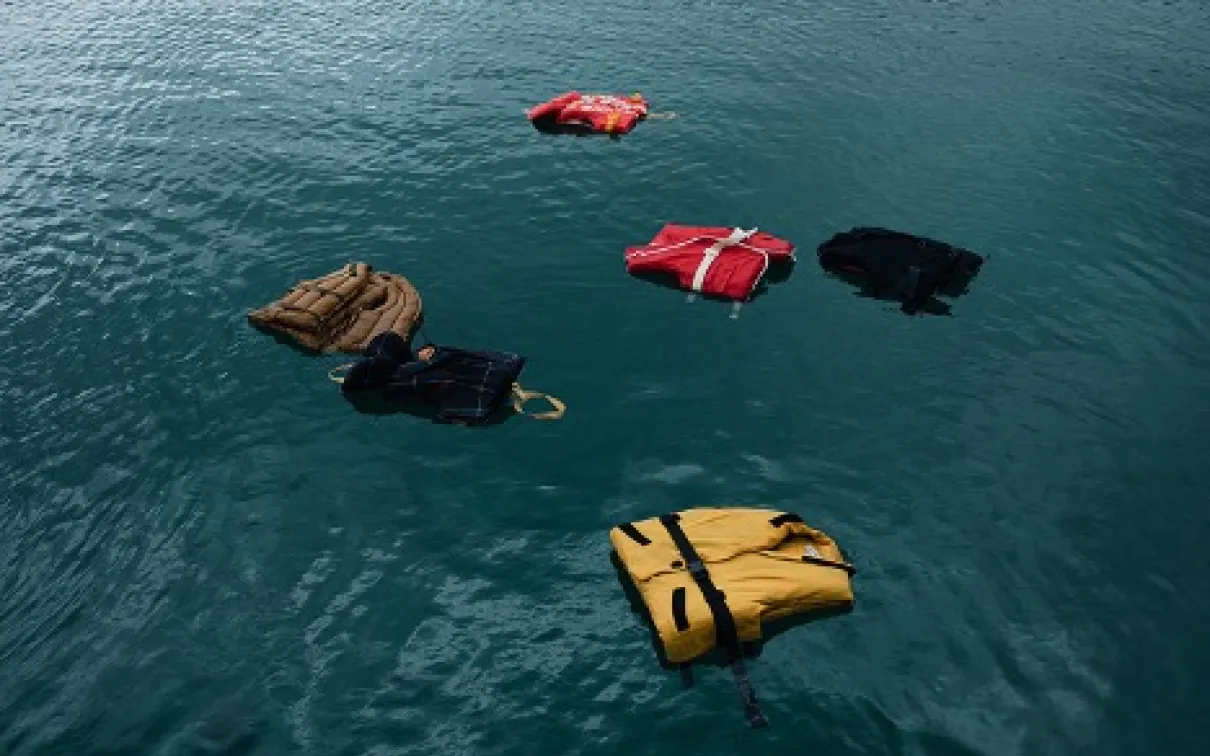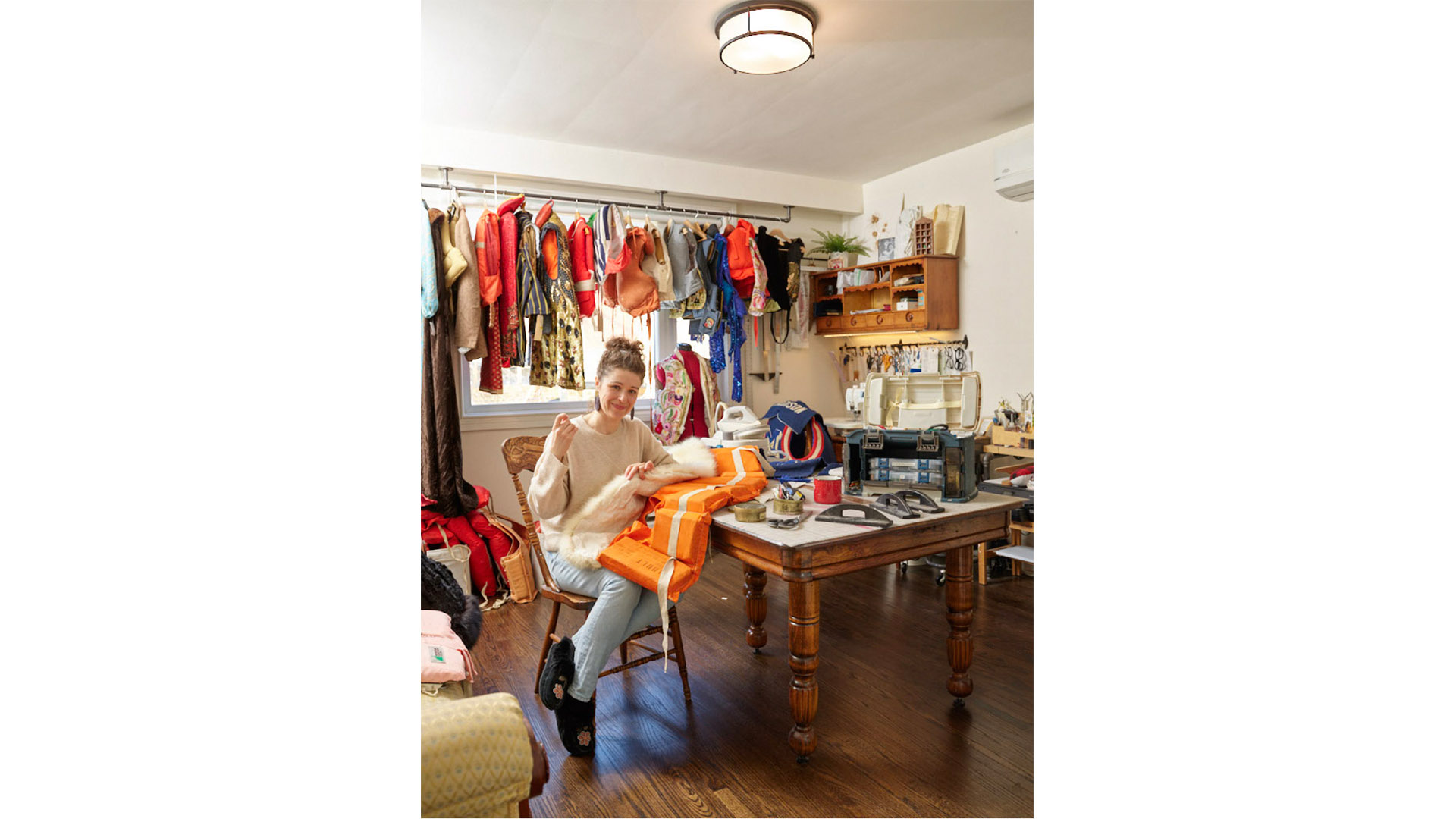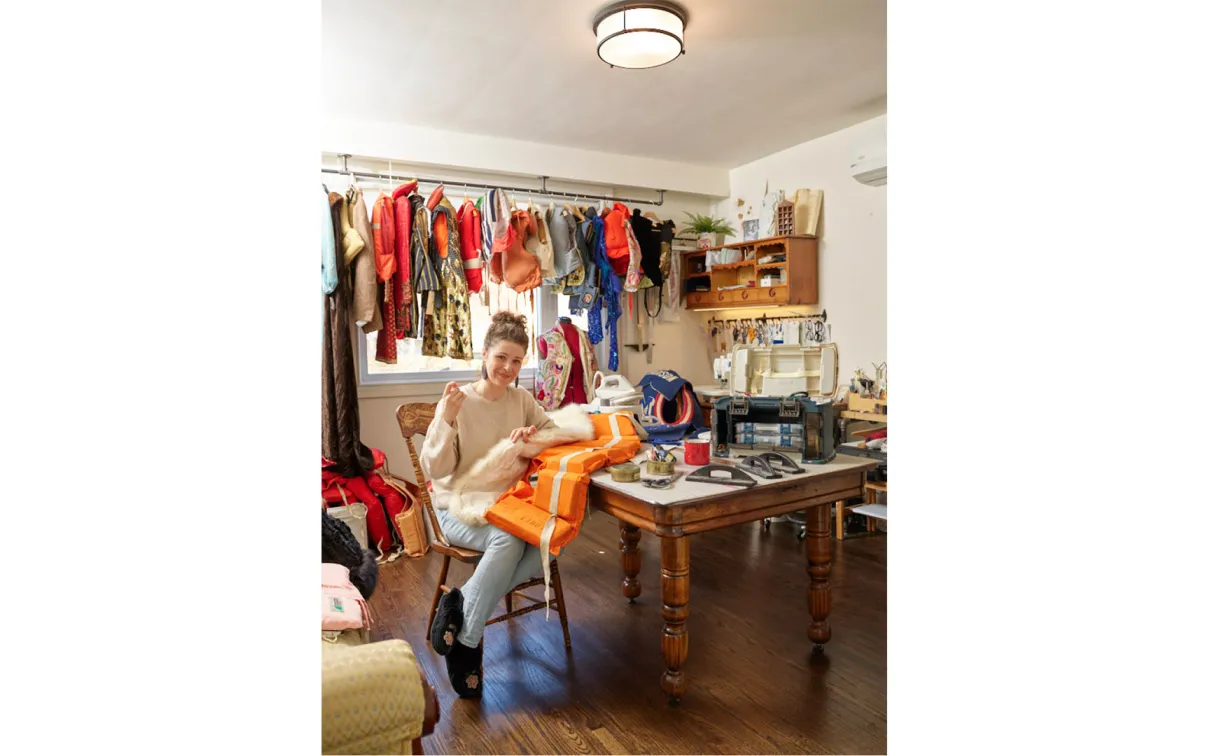“I hope people will take a look at their connection to clothing and maybe realize that they don’t need to buy more”
Noelle Hamlyn’s upcoming new installation at ROM asks us to mend our relationship with dressing up.
Published
Category
Author
You probably won’t even notice
You probably won’t even notice it right away–a tiny hole in a sweater, soon big enough to be visible. Now what do you do? If you’re most people, most of the time, you throw that sweater out. But though the sweater might leave your life, it certainly doesn’t stop existing. “There’s one dump truck a second moving fashion in landfills,” says Alexandra Palmer, ROM’s senior costume curator. “It’s appalling.”
Why do we have so much clothing? Where did it come from? What happens when we throw it away? And what might we do instead? Visual artist Noelle Hamlyn’s forthcoming installation, Lifers, asks us to consider just such questions, joining a chorus of voices calling for the West to mend its relationship with dressing up.
The global fashion industry is worth more than $1.5 trillion dollars—about as much as the annual gross domestic product of Australia. Any industry that big has a substantial impact on planetary wellbeing and sustainability–and on the wellbeing of its workers. Textile workers around the world, the majority of them in Asia, are systematically underpaid and exposed to dangerous, exploitative working conditions—especially in the lowest-paid positions, which are predominantly occupied by women.
Textiles are made from plants (like cotton), petroleum (like polyester), or animal products (like wool). Making them, dyeing them, and stitching them together is a materials-intensive and water-intensive process that produces more than 2.1 billion tonnes of greenhouse gas emissions each year, about 4 per cent of total annual emissions. And fashion is a thirsty industry, using about 93 billion cubic metres of water each year to produce textiles. Research has found that water use and pollution at every stage in the clothing production supply chain imperils even more than that.
Getting rid of clothing currently poses almost as much of a pollution and exploitation problem as making it does. None of this is a secret, says Palmer: “We have a lot of knowledge. We just need to dismantle some things, which is very difficult.”
But there is good news, she says: changing the way the industry operates is “becoming a business imperative.” As jurisdictions like the EU start to more heavily regulate the clothing industry, maintaining market share means shifting practices to be lower-impact and more in line with the ideals of a circular economy, where materials are produced and then recycled indefinitely.
Lifers is “a project that I’ve been working on for about four years” Hamlyn says, borne out of an artist’s residency on British Columbia’s iconic Salt Spring Island. While walking the beach, the artist kept encountering battered life jackets. “Whether they were washed up, or whether they were stored out of sight, I don’t really know,” she says.
Hamlyn took them back to her studio
Hamlyn took them back to her studio, and began thinking about sea level rise, about climate change, about the Titanic. She went to environmental film festivals and talked to her hosts about these issues. She started visiting antique shops and people started to give her lifejackets and old clothing. The perspective and the pieces she gained during the residency became the basis of Lifers. While working on the project, Hamlyn did her best to not buy any new supplies— “except for thread,” she says, “which I can’t really reuse.”
Hamlyn’s installation—and the haunting suite of photographs by Geoff Coombs that accompanies it—is intentionally open to interpretation. Still, she hopes people will leave Lifers with a new perspective. “I hope that people will take a look at their connection to clothing,” she says. “That they’ll take a look at what’s in their closet and maybe realize that they don’t need to buy anything else.”
The fashion industry desperately needs to change—that much is clear. But so do our habits. Soren Brothers, ROM’s inaugural Allan and Helaine Shiff Curator of Climate Change, got involved with the installation about six months into his tenure, and he says working on this has changed his own perspective on clothing.
”If a shirt gets a hole in it or if a sock gets a hole in it, I think the instinct is to throw it away,” Brothers says. “I think that’s part of the issue, this relatively new societal trend: our clothes are just so cheap, we don’t bother to be good stewards for them.” Now, he’s trying to spend one evening a week mending his family’s clothes.
For him, part of this shift is “moving away from the idea that climate change solutions have to be a sacrifice,” and finding something to take pride in. A patch is an opportunity to be creative and make a piece of clothing unique; textile waste doesn’t contain that possibility. “It’s not cool or exciting to throw away a bunch of clothes when they have a hole in them,” Brothers says.
The two elements—industry change and cultural change—go hand in hand. It’s challenging to mend or maintain low-quality textiles, while the expectation that everyone (especially women) will have an entirely new outfit every day makes it hard to afford a sufficient number of high-quality clothes.
But change is starting—just look at the growing movement to mend and buy second hand here in Canada. “I think it comes back to our standards,” says Hamlyn, “and what we’re willing to say is acceptable.”




